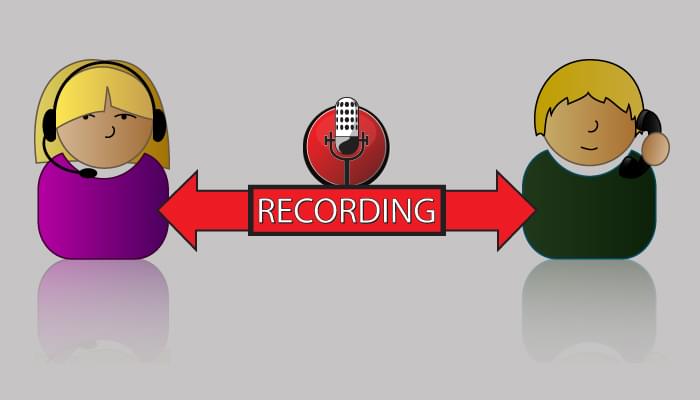VoIP calls, having already been encoded into a digital format, are particularly well-suited for digital recording. The technology is, of course, miles apart from older, analog recordings, although the system does require some fine-tuning in order to be compatible with other systems. Digital recording has a number of advantages over older, analog recordings.
VoIP call recording works by connecting an appliance, a device that runs software, into the data stream, for example, by connecting an Ethernet cable to the Switched Port Analyzer (SPAN) port. The software is designed to detect, or “sniff.” out VoIP data packets. The devices and software can be on-premise or collocated at the hosted PBX location. VoIP call recording is compatible with many of the
features of VoIP like call transfer, forwarding, barge, call park, etc., as long as at least one line is set up to be recorded.
Some of the top names in call recording are Verba, SIPfish, NICE and SIPPrint, although no one software is best for every business. The top names are constantly innovating new features and are compatible with the top hardware and software names, like Asterisk, Polycom and Cisco. There are both open-source and proprietary VoIP software, and some software is compatible only with Windows, or with a Mac, or with Linux, but many are compatible with more than one.
Call recording can be active or passive, or record the SIP trunks. Passive recording works by connecting the recorder to a router, such as the aforementioned SPAN connection. Active recording can be done at any place within the IP network. One way to do call recording is to dial in a a number, and one way to do this is by using three-way calling to the recording number. By using this method, you can begin recording before the call starts, or begin recording during the call. Trunk-side recording, because it is recording the calls made to outside trunks, can not automatically record internal calls.
VoIP call recordings are stored on a hard drive. In theory, by using a enough hard drives you will never run out of hard drive space. Hard drives are easily swapped out without having to shut down the appliance. Another great advantage of software-based recording is that it includes information about the call, such as who it was from/to, the date, and the time and date. These call logging features make
it easy to archive and easy to protect yourself legally. For instance, a bank call center representative can read off a disclaimer and the customer can acknowledge it. Another great feature is that calls can be emailed, just like voicemail using transcriptions. All of this is done with a web-based graphic user interface. VoIP call recording scales from small businesses to enterprise, depending on the needs of the user.
VoIP call recording is another great tool for modern businesses. No business is too small to have some form of call recording software, and fortunately, hosted PBX providers give you the option of call recording either included with their package or for an additional fee.
Related:
– Cisco Releases New Software-Driven Innovations to Telehealth
– What is Software as a Service? (SaaS)
– What Features of VoIP Are Overrated & Underrated?






![What is Omnichannel Customer Service? [Benefits & Tips] What is Omnichannel Customer Service? [Benefits & Tips]](images/omni-channel-explained-350x203.png)

